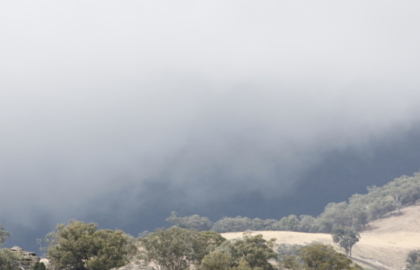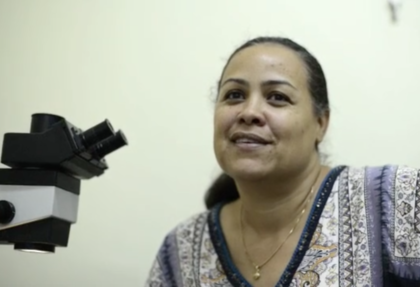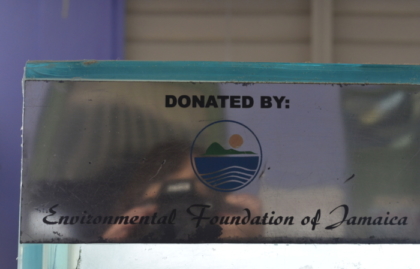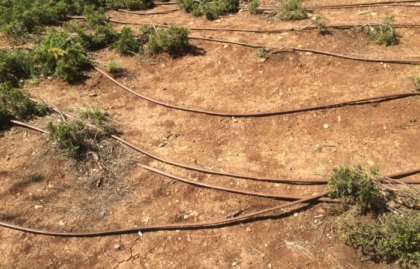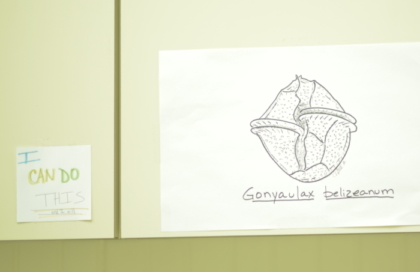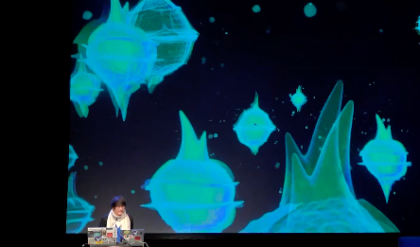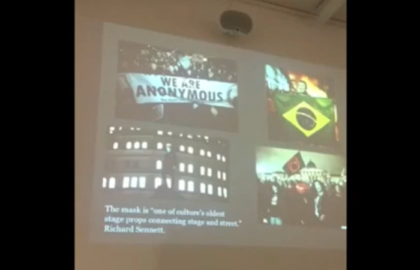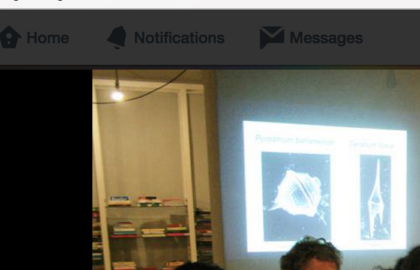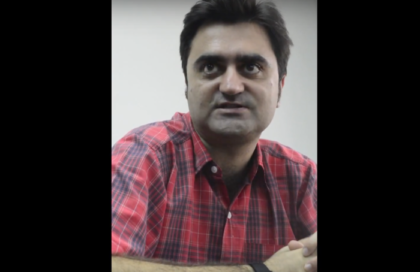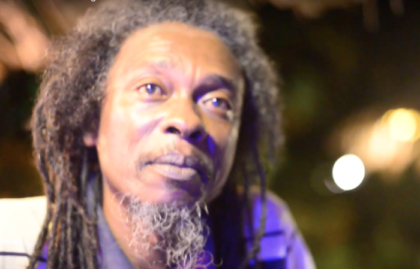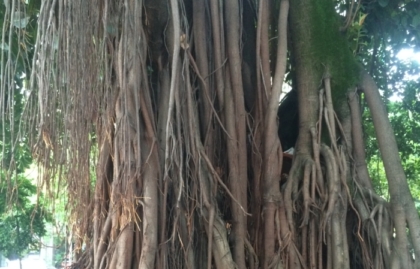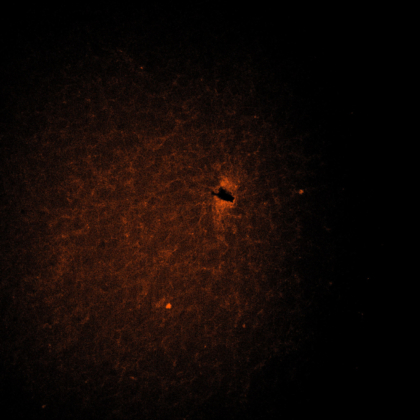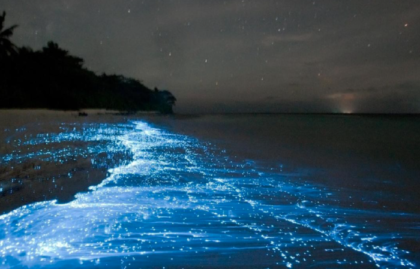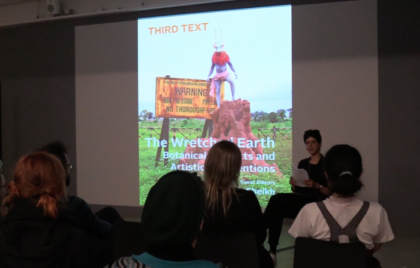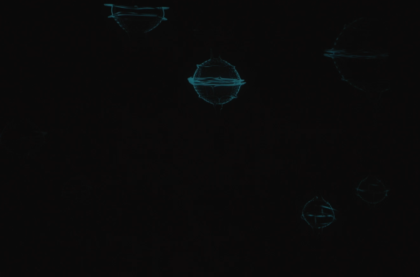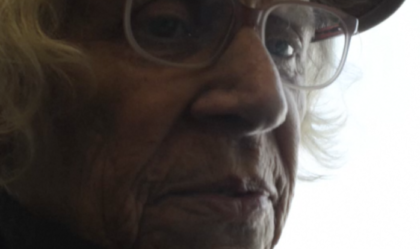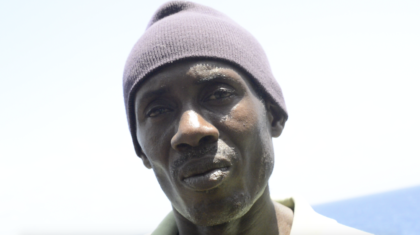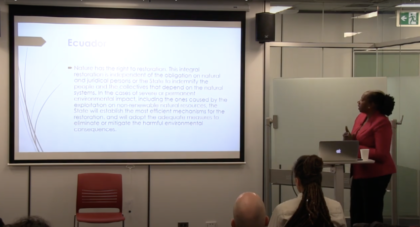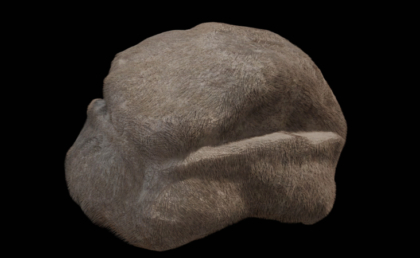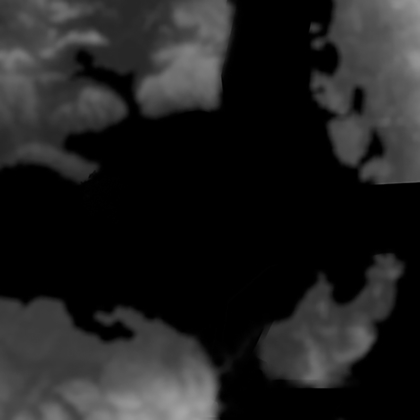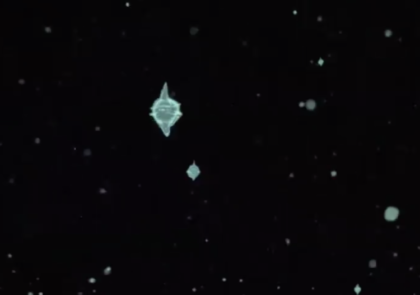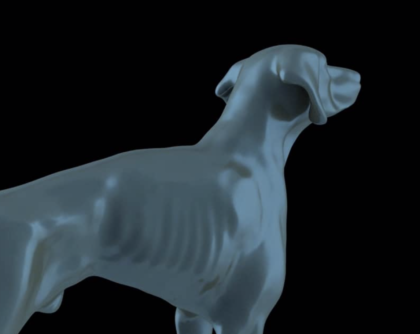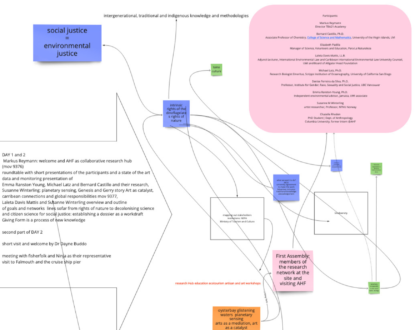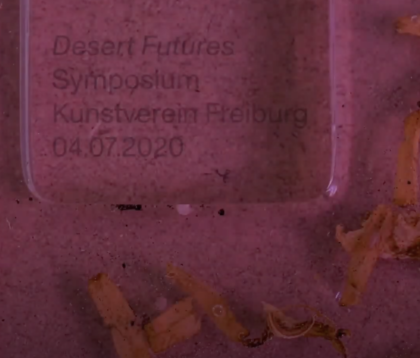more particles
fractal sensing/ thinking on a planetary scale
Denise Ferreira da Silva
Denise Ferreira da Silva and Susanne M. Winterling
SMW: If it’s ok, we start with the concept of “poetical ethics”. The basis and development of this line found in your work and which intuitively is an imperative that connects to our times. Maybe you can explain as an introduction where this idea is coming from? The seemingly opposites have a dynamic and a potentiality that is not equal dialectics but more speculative and realistic. How did poetical ethics come about? And having the discussion about expression and information behind us can it be used as a bridge?
DFS: It is information shared. So information only makes sense if it’s communicable. In “To be Announced: Radical Praxis or Knowing (at) the Limits of Justice”1 I look into arguments which trace what is reproducing that violence, is an re-enactment of the subjection, of the scenes of subjection and slavery.
Saidiya Hartman2 traces this re-enactment of subjection, the exposure of violence of the black body beyond slavery.
Fred Moten3 took a different position in relationship to the presentation of the scene of violence, highlighting the fact that if you focus on the sound, on the scream, of the violated person, it opens up the possibility of a subject or, rather an ‘object’ that instead of responding to the violence and being placed in opposition to Hegel’s lordship actually opens up to the possibility of something else. He calls it “the resistance of the object”. And Lindon Barrett4 looks at the violence more towards an engagement with historical materialism.
The paper, which doesn’t have a title has been published with the title To be announced because that was the title I gave to the presentation, which is now the title of the paper. In writing that paper I staged a conversation between the three of them. And through the conversation, that I highlight here, is the twice violated black female slave body. And I engage different kind of philosophical and black and critical racial literature to then see how not only to trace the impossibility of the articulation of the black female slave subject, but also of what one could call the dead-end of the attempt to articulate her through a discourse which is organized by the modern subject and his desire.
Basically I adopted an equation which is even worse than the ones that I have been doing now, because that one only has words. But tracing through her, I find the violence against the black body is a violence that can be accounted for if you look at the workings of blackness as a category. But that is something else, in the twice violated black female body, black female slave body, that may be a direction to something else. Maybe it points to a different grammar, one which is not informed by the modern subject, which is the figure in certain formulations of desire. Or in the formulation of desire in post-enlightenment thinking.
It was from there that I started imagining what if… The “what if” began from there. What if we could then engage violence, like the scenes of police violence, without referring to blackness as a category, through which violence is always justified, through the constructions of the black subject or the black person as fundamentally violent, but actually going after the excess. Which I argue refers to the ‘in itself’ of the thing as that which is not to be of interest of knowledge as a way of tracing. The black feminist aspect of it has to do with excess and the move away from the subject as a thing of desire and at the same time it opens up, because once you go for the thing and without an interest in its essence or relation, you gesture to the limits of modern thinking. My interest in the thing is not an interest in its essence but is an interest in what else about the world could be known if modern knowledge had not limited itself as much as it did. Once I got to that point, which attracts me as an academic trained in a very French structuralist and then post-structuralist tradition. Anyway, moving away from the self-conscious subject, opens up the possibility of asking different questions. Including questions that would allow for engaging – for instance, in my area of interest, a critical legal theorizing and politic brutality – not merely through a critical exercise that would focus on the foundations and the grounds for such violence, but actually through another kind of exploration that could get us elsewhere beyond that.
The poethical comes in at that moment. It is not so much an opposition, but it’s a wondering: what if we also, in the movement of critique, anticipated and attended to the creative as having these two movements at the same time. On the one hand the critique of violence and then on the same time attending to the possibility of re-imagining the world in such a way as to dissolve the “facts” created racial categories and the writing of certain persons and certain places in/as violence. Black persons in the case of my work, or the spaces, as fundamentally violent and then at the same time going through the categories, through its sound foundations and beyond its foundations. Beyond the forms and the categories that of Kant’s pure intuitions and Hegel’s Spirit, all those sociological concepts that inform how we engage with the world.
So the poethical is always to mark a relationship, the insistence that violence is attached to the category has to be addressed. But then at the same time an invitation to consider the world as something else. The poethical, the poesis, refers to the possibility of a world already present in the excess of the violence to…
SMW: How is this related to “fractal thinking” which I connect to fractals as in the romanesco patterns and images from machines for machines. This leads us to coding and a world like Octavia Butler’s and Donna Haraway’s where cyborgs and critters are to engage with because we are connected with them, and we are partly them. It also includes being able to learn from one another?
Let’s say the “what if” and the poethical thinking, and the fractal thinking, could be a way out of systemic violence in repetition and reproducing binary patterns – the binary patterns of violence and discrimination that we can witness in ecology as well as race and gender.
What as an artist strikes me the most is how it inevitably makes you engage with complexity of an irreducible kind. Including the fourth dimension, because now you have mostly spoken about locality, also interesting is the temporality and the fourth dimension. You would actually use the term fourth dimension: It’s different to singularity, which is distinguished from particularity. Maybe you can say a little more why singularity is different to possibility or also different to the event? Does that make sense (the end of the question)?
DFS: It all makes sense, it is a lot though. But it all makes sense. I am going to, I already told Susanne, I am going to respond to her questions, but not answer them. Now you know what is going on [laughs]. Response number one [laughs], which may or may not cover most of your question.
Fractal thinking is part of the exercise “what if”. And again it has those two moments: fractal thinking and poethical thinking. The exercises that I do are an attempt to maybe collapsing the creative and the critical by looking at statements, or events or accounts in such a way as trying to avoid being caught up in linearity and separability that… all of that inscribed in the form of the account, but also in the terms that are used to produce the account. Basically my idea is primarily looking at situations by trying to trace what I am calling the racial event. I am narrowly defining them, but we can open them, as events of racial violence and moments of racial violence in which we can see the excess, and in these cases the excess is always in relation to what is usually considered as ethically acceptable or legal. Looking at those events and the exercises I have done are all different historical moments, and I then find the elements in discourse, but also in the juridical, the economic and the symbolic structures that are repeating. And this is an attempt at interrupting accounts of racial violence, including accounts of the “refugee crisis”, these recent accounts, as being something that are either part of a historical process, so they would be just expected to happen. Or they are interruptions of an historical process, then they should not have happened. Or, these events take place, because of those that have been involved and those that have actually been harmed in those situations, that is, it is actually their fault. It is actually because they are the ones who create this, so as we find in the combination with the “refugee crisis” and Islamophobia for instance: “they are terrorists,” “they come here to hurt us”; that’s why they are placed in those positions. Or, statements about “economic refugees”: “they come here to take our wealth and that’s why they are placed in those positions”. Fractal thinking is an invitation to complexify these situations by placing them in a larger, in a longue durée5, historical moment as well as attending to the global moment, in order to identify the juridic and economic processes, structures and discourses that are playing out in the same moment. One aspect to it is of course at the attention to the singularity – the singular event, ‘refugee crisis’, for instance – to locate a particular kind of repetition, but a repetition that has to be interrupted. So the composition in the fractal is the positioning of those different moments in time and space, but as part of the same context. Walter G. Benjamin’s dialectical image is my source of inspiration here. In this sense it’s a composition, or decomposition depending upon the possibility to interrupt the unfolding of a discourse – philosophical, historical, sociological, anthropological, etc. – which would otherwise allow for a presentation of a situation that always justifies violence away, placing it those subjected to violence or making it something from the past that now comes back to haunt us, but it doesn’t belong here. So that’s one way of talking about fractal thinking.6
1 Social Text, Volume 31, Issue1 (114), 2013.see also: https://read.dukeupress.edu/social-text/article-abstract/31/1%20(114)/43/33743/To-Be-AnnouncedRadical-Praxis-or-Knowing-at-the
2 Saidiya Hartman, Scenes of Subjection: Terror, Slavery, and Self-Making in Nineteenth-Century America (Race and American Culture), Oxford University Press 1997.
3 Fred Moten, In the Break: The Aesthetics of the Black Radical Tradition, JSTOR 2003.
4 Lindon Barrett, Blackness and Value: Seeing Double, Cambridge University Press 2009.
5 short explanation: https://en.wikipedia.org/wiki/Longue_durée
6 Denise Ferreira da Silva, Fractal Thinking, 2016, https://accessions.org/article2/fractal-thinking/ (12.08.2018).
Denise Ferreira da Silva writes and researches about violence and ethical issues of the global present, using tools from critical legal theory as well as feminist, racial and postcolonial theorizing.
She is a Professor and Director of The Social Justice Institute (the Institute for Gender, Race, Sexuality, and Social Justice) at the University of British Columbia. Before joining UBC, she was an Associate Professor of Ethnic Studies, at the University of California, San Diego and, from 2010 to 2015, she held the inaugural chair in Ethics, at the School of Business and Management and the directorship of the Centre for Ethics and Politics, at Queen Mary University of London. Her research areas include Critical Racial and Ethnic Studies, Feminist Theory, Critical Legal Theory, Political Theory, Moral Philosophy, Postcolonial Studies, and Latin American & Caribbean Studies.
Susanne and Denise met for a workshop on justice as a medium and a commission for the Contour Biennale 8. From then on a dialogue and workshops and readings started to be the nurture ground of a research group on social and ecological entanglements in times of structural violence.
The conversation is a script from a public event at at Archive Kabinettin Berlin 2017 after a seminar and lecture series.
